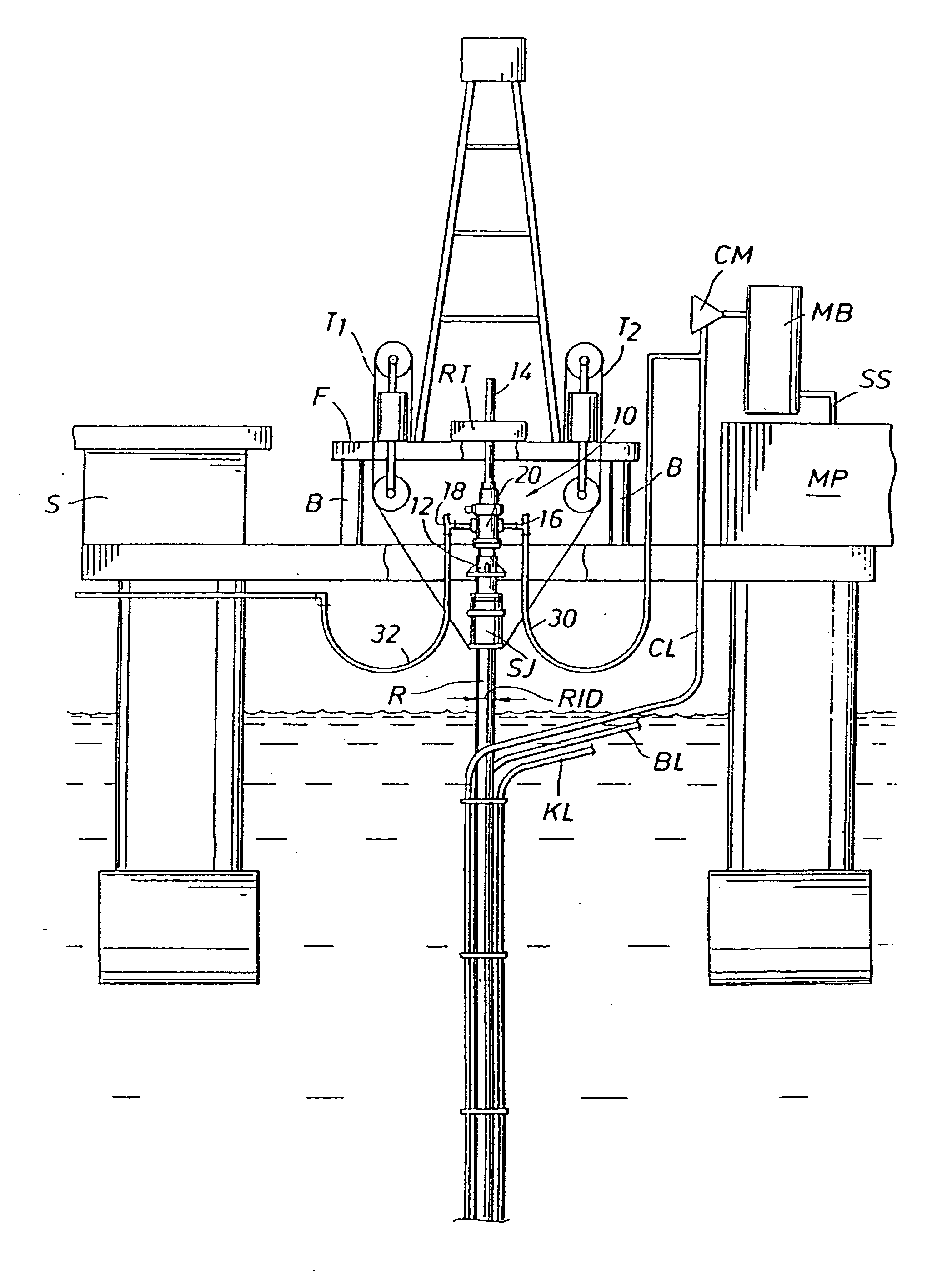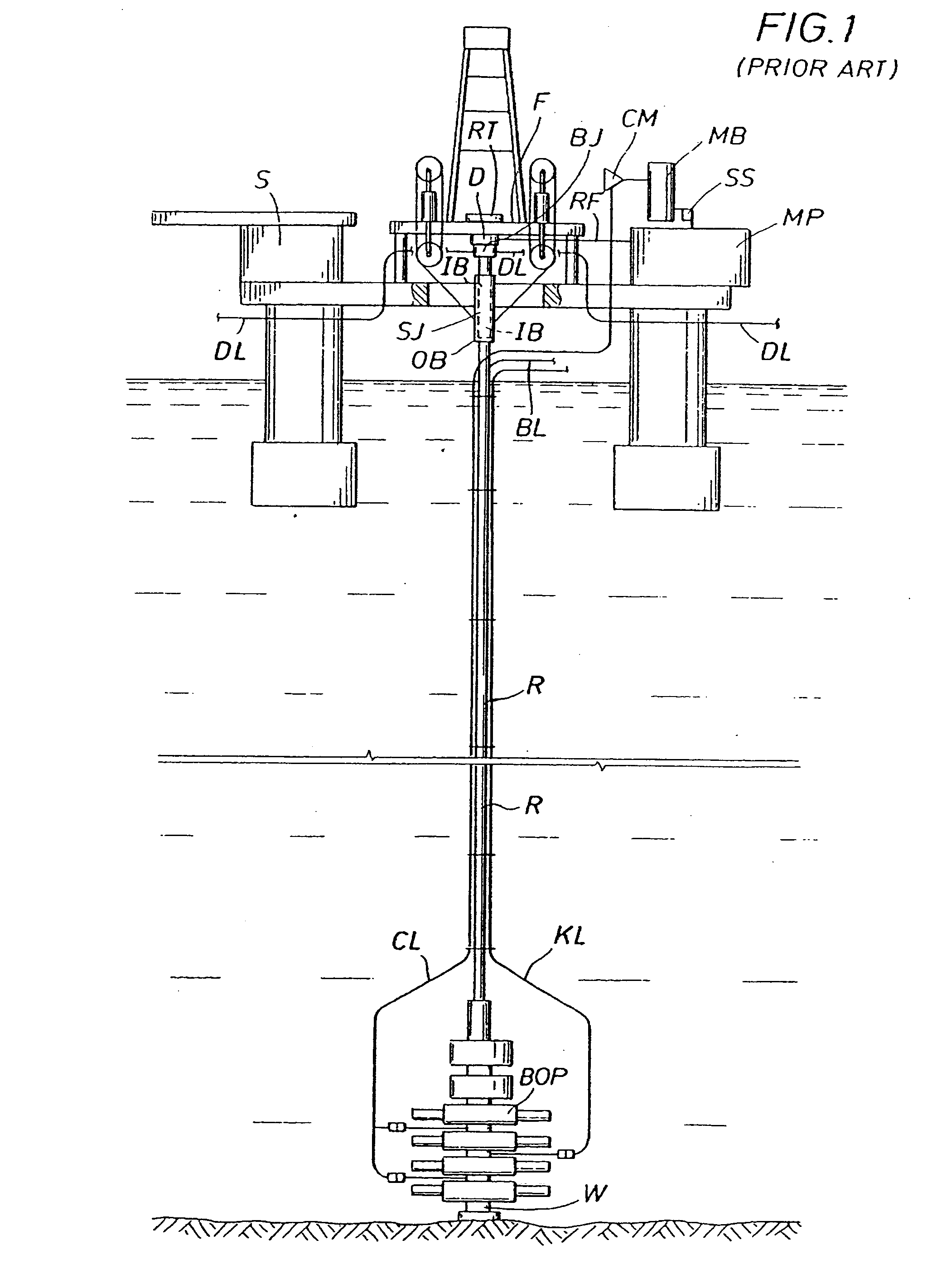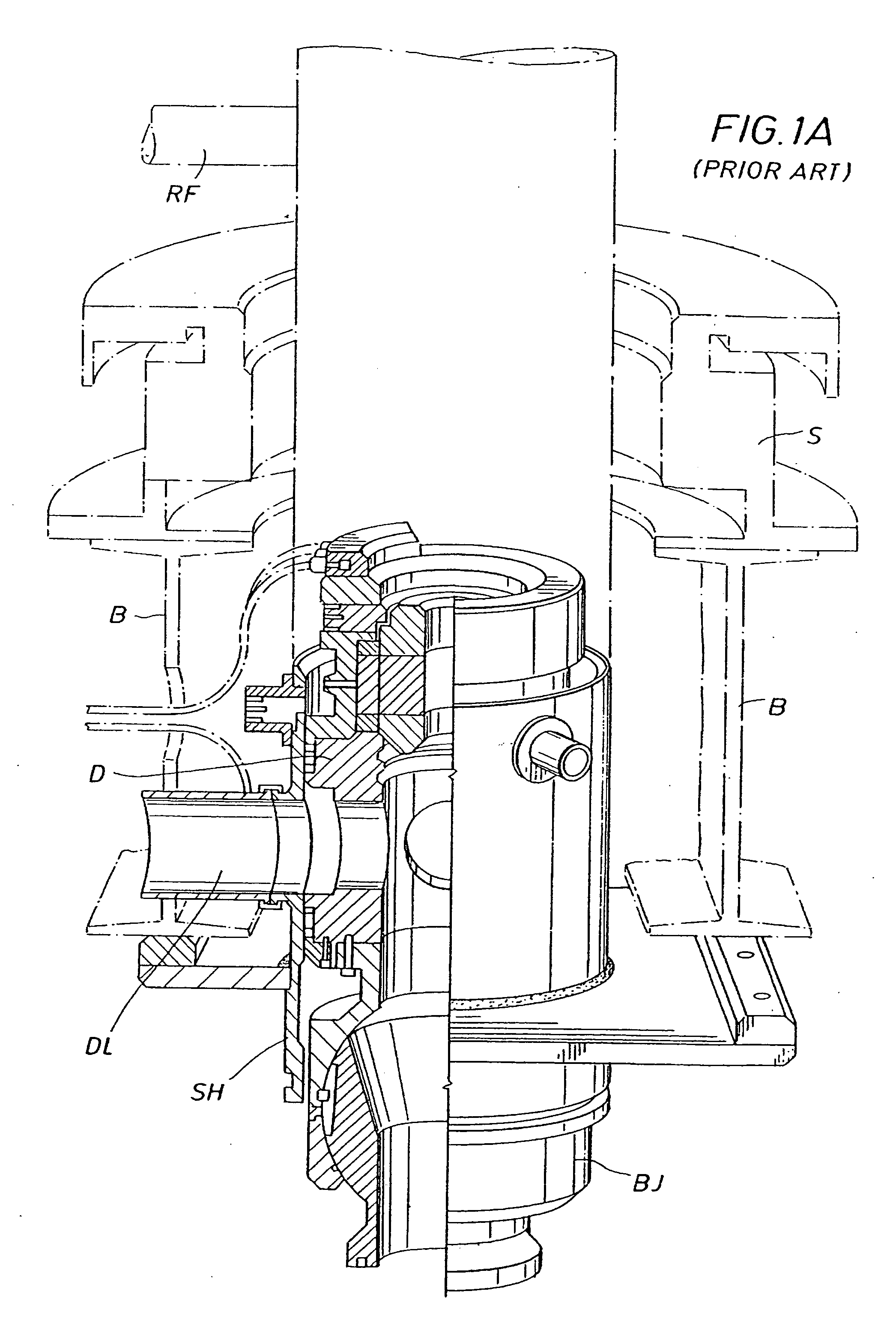Method for pressurized mud cap and reverse circulation drilling from a floating drilling rig using a sealed marine riser
a technology of seals and risers, which is applied in the direction of sealing/packing, drilling pipes, and drilling holes/well accessories. it can solve the problems of significant rig downtime, environmental problems, and the possibility of over-reaching the seal pressure rating of these joints
- Summary
- Abstract
- Description
- Claims
- Application Information
AI Technical Summary
Benefits of technology
Problems solved by technology
Method used
Image
Examples
Embodiment Construction
[0033]FIG. 14 discloses the preferred embodiment of the present invention.
[0034]FIG. 2 illustrates a rotating control head (RCH), generally designated as 10, of the present invention. The RCH 10 is similar, except for modifications discussed below, to the RCH disclosed in U.S. Pat. No. 5,662,181, entitled “Rotating Blowout Preventer” and assigned to the assignee of the present invention, Weatherford / Lamb, Inc. of Houston, Tex. The '181 patent, incorporated herein by reference for all purposes, discloses a product now available from the assignee that is designated Model 7100. The modified RCH 10 can be attached above the riser R, when the slip joint SJ is locked into place, such as shown in the embodiment of FIG. 2, so that there is no relative vertical movement between the inner barrel IB and outer barrel DB of the slip joint SJ. It is contemplated that the slip joint SJ can be removed from the riser R and the RCH 10 attached directly to the riser R. In either embodiment of a locke...
PUM
 Login to View More
Login to View More Abstract
Description
Claims
Application Information
 Login to View More
Login to View More - R&D
- Intellectual Property
- Life Sciences
- Materials
- Tech Scout
- Unparalleled Data Quality
- Higher Quality Content
- 60% Fewer Hallucinations
Browse by: Latest US Patents, China's latest patents, Technical Efficacy Thesaurus, Application Domain, Technology Topic, Popular Technical Reports.
© 2025 PatSnap. All rights reserved.Legal|Privacy policy|Modern Slavery Act Transparency Statement|Sitemap|About US| Contact US: help@patsnap.com



